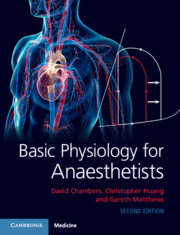Book contents
- Basic Physiology for Anaesthetists
- Basic Physiology for Anaesthetists
- Copyright page
- Dedication
- Contents
- Foreword
- Preface to the Second Edition
- Preface to the First Edition
- Abbreviations
- Section 1 The Basics
- Section 2 Respiratory Physiology
- Section 3 Cardiovascular Physiology
- Section 4 Neurophysiology
- Section 5 Gastrointestinal Tract
- Section 6 Kidney and Body Fluids
- Section 7 Blood and Immune System
- Section 8 Energy Balance
- Section 9 Endocrine Physiology
- Section 10 Developmental Physiology
- Section 11 Environmental Physiology
- Chapter 87 Altitude
- Chapter 88 Diving
- Chapter 89 Temperature Regulation
- Index
- References
Chapter 88 - Diving
from Section 11 - Environmental Physiology
Published online by Cambridge University Press: 31 July 2019
- Basic Physiology for Anaesthetists
- Basic Physiology for Anaesthetists
- Copyright page
- Dedication
- Contents
- Foreword
- Preface to the Second Edition
- Preface to the First Edition
- Abbreviations
- Section 1 The Basics
- Section 2 Respiratory Physiology
- Section 3 Cardiovascular Physiology
- Section 4 Neurophysiology
- Section 5 Gastrointestinal Tract
- Section 6 Kidney and Body Fluids
- Section 7 Blood and Immune System
- Section 8 Energy Balance
- Section 9 Endocrine Physiology
- Section 10 Developmental Physiology
- Section 11 Environmental Physiology
- Chapter 87 Altitude
- Chapter 88 Diving
- Chapter 89 Temperature Regulation
- Index
- References
Summary
You may wonder what a chapter entitled ‘diving’ is doing in a book for anaesthetists – only the few who work in coastal areas will ever be required to anaesthetise patients with decompression sickness. However, the primitive diving reflex is of clinical interest, and the physiology and physics associated with descent are not infrequently tested in postgraduate examinations.
- Type
- Chapter
- Information
- Basic Physiology for Anaesthetists , pp. 434 - 435Publisher: Cambridge University PressPrint publication year: 2019

